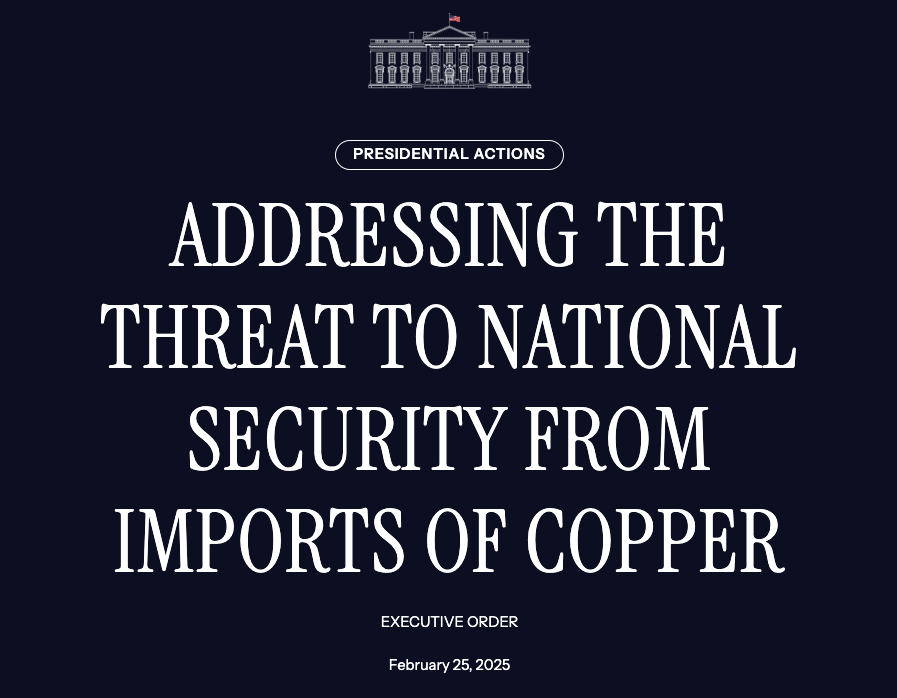The White House recently initiated a Section 232 investigation into copper imports, citing national security concerns on U.S. reliance of foreign-mined, smelted, and refined copper. The executive order directs the Commerce Department to determine if this dependence is harming domestic copper production and negatively impacting industries necessary to national defense, infrastructure and advanced technologies.
“A single foreign producer dominates global copper smelting and refining, controlling over 50 percent of global smelting capacity and holding four of the top five largest refining facilities. This dominance, coupled with global overcapacity and a single producer’s control of world supply chains, poses a direct threat to United States national security and economic stability.”
Addressing the Threat to National Security from Imports of Copper | Executive Order
SECTION 232 INVESTIGATION TO ASSESS NATIONAL SECURITY IMPACT
The administration warns that foreign subsidies, market manipulation, and global overcapacity are distorting prices and threatening U.S. industrial resilience. Copper is the Defense Department’s second-most utilized material, yet America’s smelting and refining capacity lags behind global competitors like China, which controls over 50% of global smelting capacity.
According to the U.S. Geological Survey, domestic copper production declined by 11% in 2023, while import reliance rose to 46% of consumption. The top sources of U.S. copper imports were Chile (64%), Canada (18%), and Mexico (11%).
The investigation will determine whether these factors threaten U.S. economic and energy security and if measures such as tariffs, quotas, or trade restrictions are necessary. The Department of Commerce will assess demand for copper in defense, energy, and infrastructure, the risks of foreign supply disruptions, and the feasibility of expanding domestic smelting and refining capacity.
TRADE AND INDUSTRY IMPACT
With copper demand surging for electrification, AI-driven infrastructure, and clean energy, the investigation’s outcome could have significant cost and supply chain implications for manufacturing, construction, and transportation. Potential tariffs or trade restrictions may increase copper costs, impacting electronics production, vehicle manufacturing, and building materials.
“America’s reliance on copper imports has surged from virtually 0% in 1991 to 45% of consumption in 2024, heightening risks to supply chain security.”
Fact Sheet | President Donald J. Trump Addresses the Threat to National Security from Imports of Copper
A shift toward domestic mining and refining could require supply chain adjustments and long-term investment in U.S. production. If foreign suppliers retaliate with trade restrictions of their own, industries reliant on imported components could face higher costs and supply chain disruptions.
Stay up-to-date on freight news with Green’s Weekly Freight Market Update by following us on LinkedIn. For continuous updates, make sure to check out our website at greenworldwide.com.






